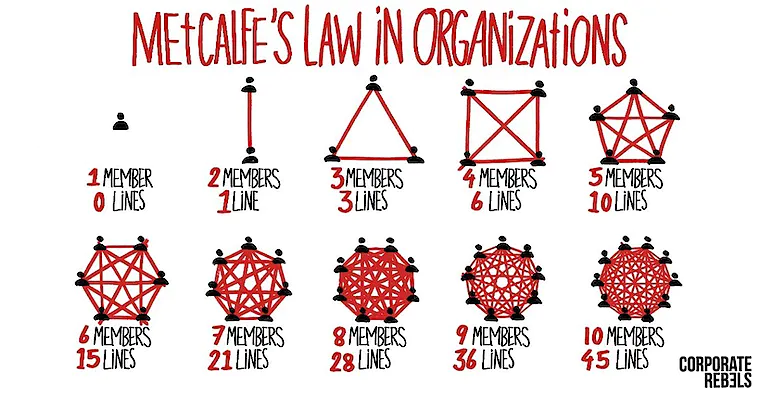Hello Stackers, If you know about Metcalfe’s law, it says states that “the value of a network is proportional to the square of the number of connected users. As the physical cost of the network grows linearly, its value grows exponentially.” So that every time you add a new user to a network, the number of connections increases proportionally to the square of the number of users.

Small team win because they solve communication complexity???
As your team grows, so does the complexity of communication, the return on work, and your ability to develop people. Let’s take a look at this. If you have a team of four people, there are actually six different lines of communication. If you add just one more person to that team, it now has ten lines of communication. Six people on your team mean fifteen lines of communication.

You get the idea now that as we add people, it becomes more and more likely that communication will break down or that things are just going to become unclear. It’s complex, and it also impacts the group dynamics; it affects how they relate to one another, and if they do so in an effective way, the number of people you add doesn’t have a direct return on investment and often diminishes over the number of people that you add. If you add too many people, you get a bad return on work, and your span of care is greatly reduced by the number of people.
You can actually develop, so in an ideal scenario, your team size should be no more than six or seven people. This will mitigate those issues, but for teams that grow larger, you need to consider another layer of leadership. For example, let’s say you have 20 people on your packing team. You need to add three captains to that packing team to oversee six or seven people each. Now, adding this role gives you the opportunity to elevate and develop leaders, as well as create clarity and focus for each of the individual team members. They’re going to be better served, they’re going to be more clear on what their role is, and they’re going to be better developed. So now that you understand the increasing complexity of large teams, what are you going to do about it?
